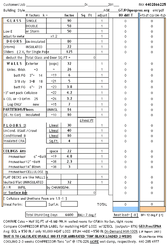Hi folks,
I'm running a wood stove, but I'm also attempting to have a conversation with my fiance about what temperature our "default" temp should be on the thermostat when we aren't using the woodstove. I'm attempting to demonstrate the difference between keeping it at 70 degrees vs. 75 degrees. The house is 2000 sq. ft. including the basement, has fairly average insulation for a house built in 1978, an I have added blown-in insulation in the attic. I'm running a 14 SEER heat pump with forced air. I dont' need an exact number, just something approximate, and I have been researching online for 45 minutes trying to find a decent cost calculator that works, with little success. I sincerely welcome your input!
Regards,
Burns
I'm running a wood stove, but I'm also attempting to have a conversation with my fiance about what temperature our "default" temp should be on the thermostat when we aren't using the woodstove. I'm attempting to demonstrate the difference between keeping it at 70 degrees vs. 75 degrees. The house is 2000 sq. ft. including the basement, has fairly average insulation for a house built in 1978, an I have added blown-in insulation in the attic. I'm running a 14 SEER heat pump with forced air. I dont' need an exact number, just something approximate, and I have been researching online for 45 minutes trying to find a decent cost calculator that works, with little success. I sincerely welcome your input!
Regards,
Burns


